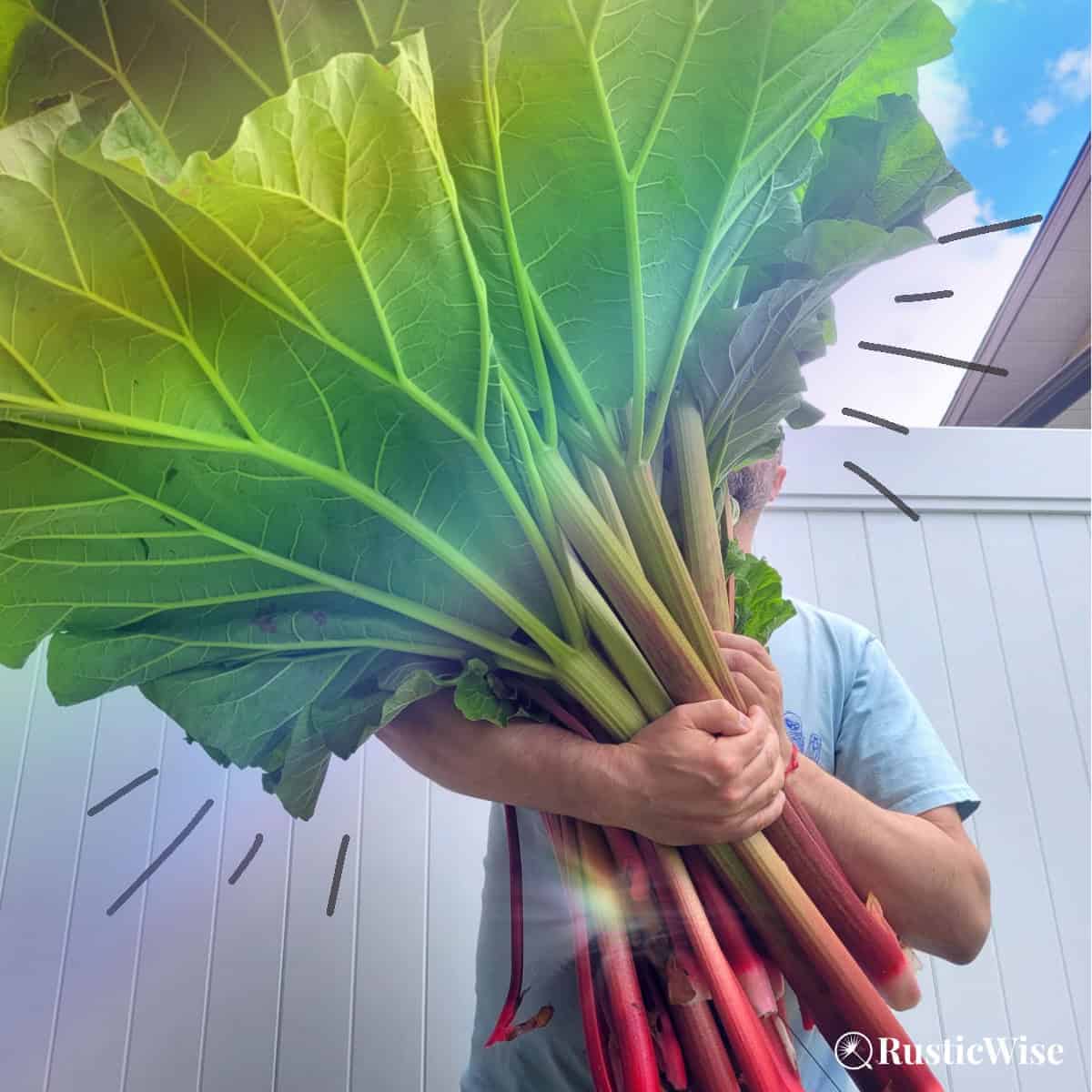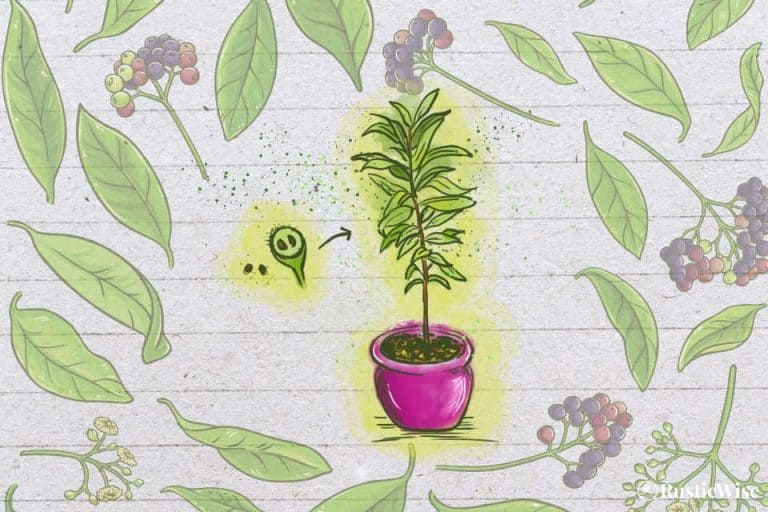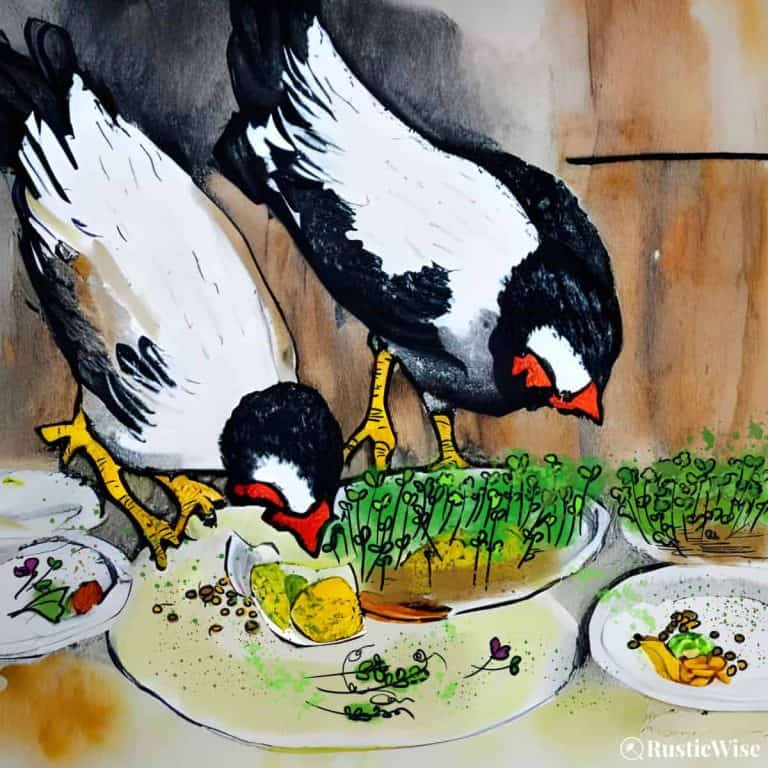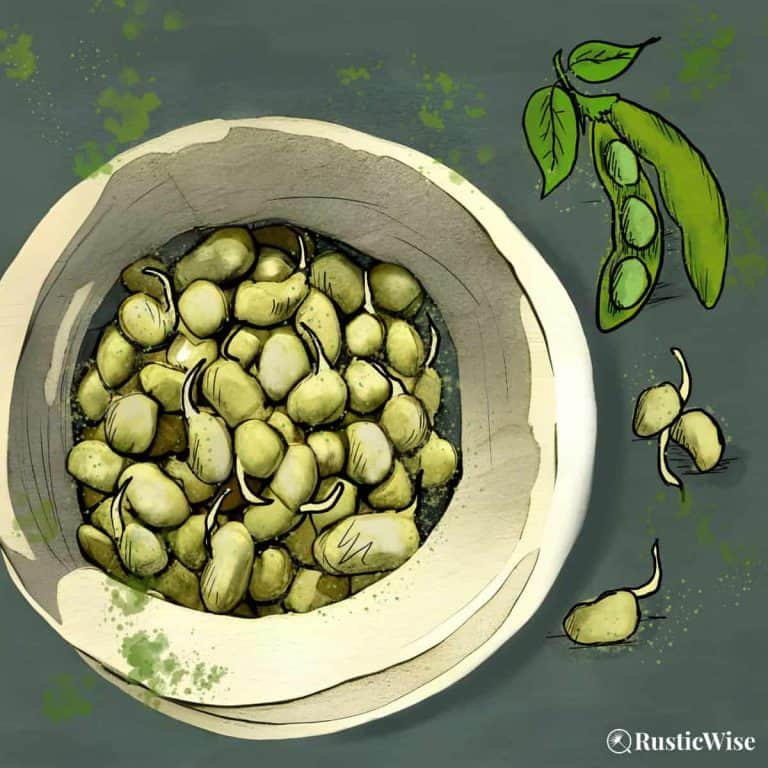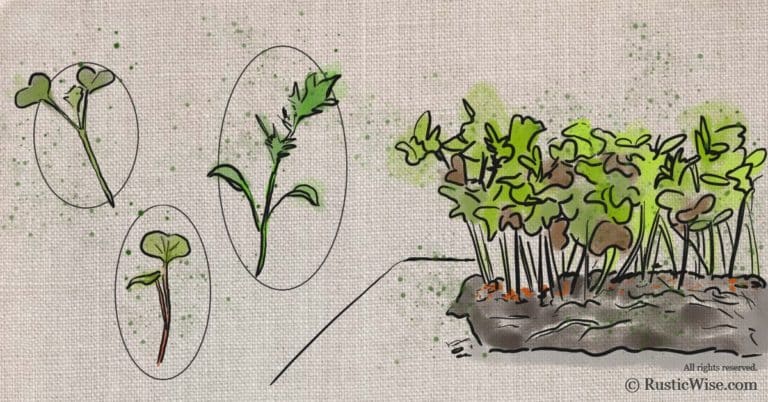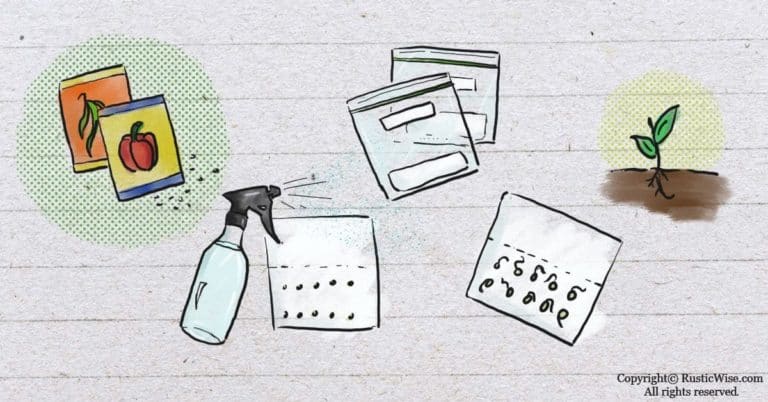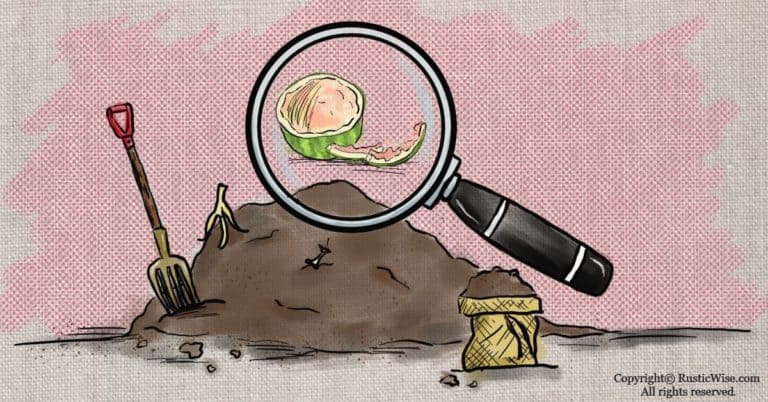Harvesting Rhubarb: 5 Common Mistakes To Avoid + Storage Tips
The weather is warm and your rhubarb patch is thriving with thick, colorful, leafy stalks. So when is the right time to harvest?
Timing is key when it comes to harvesting rhubarb. So is knowing how much to gather and how much to leave behind to ensure your crop continues to thrive. So, while you may be itching to eat rhubarb to make some tasty rhubarb pie or crumble, read this article first.
Let’s go over 5 common mistakes many people make when harvesting this hardy perennial plant so you can avoid them. Plus, I’ll show you how to properly stored rhubarb stalks for longer shelf life.
A closer look at the rhubarb plant
A hardy perennial (trust me, when I say it’s hardy as it survives our -40 degree winters), rhubarb, also known by its scientific name Rheum rhabarbarum, belongs to the Polygonaceae (smartweed/buckwheat) family.¹
(Note that the roots of Rheum rhabarbarum are cold-resistant; the large leaves will die back starting in the fall.)
The tart petioles, or leafstalks are the part of the plant we eat (leaves are discarded). Leaves appear in the spring, and sometimes, later in the growing season, a flower stalk with small, white-green blossoms may appear.
Native to Asia (Siberia), rhubarb does well growing in dry and cold climates. It prefers full sun with at least 6 hours of direct light each day and is generally considered hardy in USDA zones 4 to 7.²
The name ‘rhubarb’ is derived from its origins, the Rha river (now the Volga), in which it grows along.²
Two related species of rhubarb (Rheum officinale and R. palmatum)—typically called Chinese rhubarb—were highly coveted as medicinal plants in ancient Tibet and China. The roots of this plant was used to purge the body of ailments, like a modern-day laxative. (Britannica) Occasionally it was steeped as a tea for stomach pains and fevers.²
There are several common cultivars grown as crops today:³
- Canada Red: A variety with smaller, tender leafstalks that does well in slighlty warmer climates.
- Crimson Red (aka Crimson Cherry): Characterized by its vibrant-red stalks.
- MacDonald: A variety with pink stalks that’s resistant to wilting and root rot.
- Valentine: A solid choice for home gardens as it’s bolt-resistant and keeps its vibrant color even when cooked.
- Victoria: A classic Canadian variety that’s good for keeping wilting and root rot at bay.
Tip: When growing rhubarb in your garden, be sure to give it plenty of space—the expansive green leaves and fleshy stalks need some breathing room!
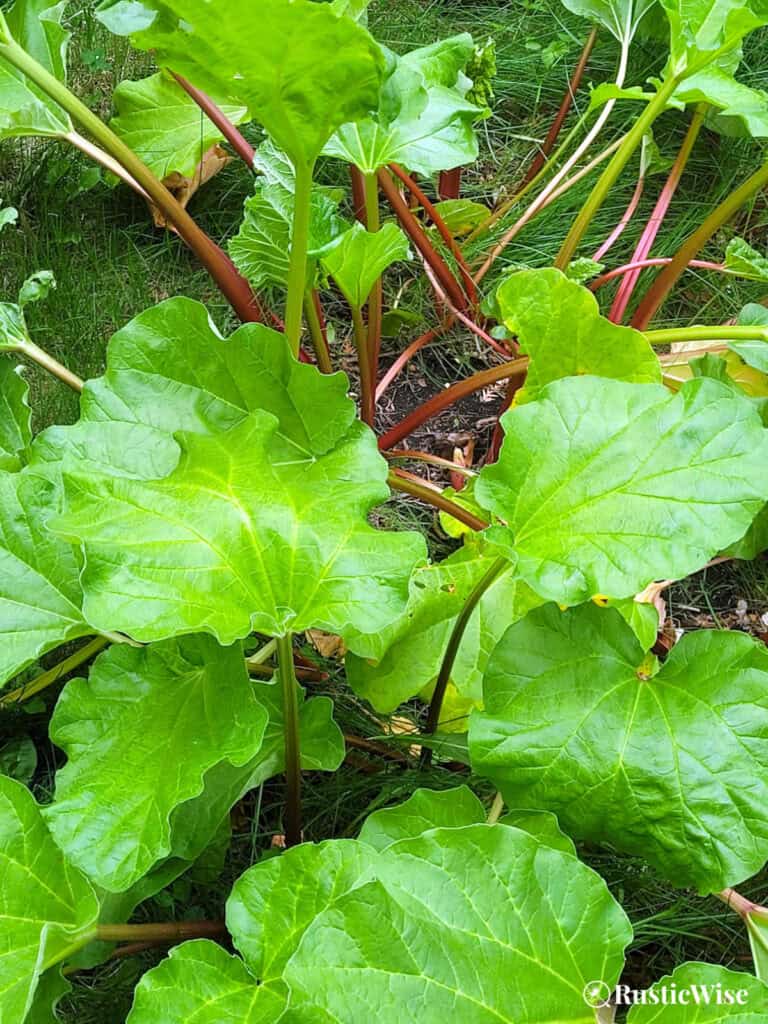
Credit: RusticWise
Is rhubarb toxic?
The stalks are edible, however the leafy greens are toxic. This is because they contain high levels of oxalic acid (oxalates), a type of toxin that can cause serious illness, or even fatalities in large quantities.
So remember to toss those leaves! Use a pair of shears to snip off all green leafy bits. Add to your backyard compost.
Consuming rhubarb leaves can lead to symptoms such as stomachaches, a burning sensation in the mouth/throat, difficulty breathing, seizures, vomitting, diarrhea, and kidney stones in severe cases.⁴ It’s important to always discard the leaves and only use the stalks in cooking or baking.
Safety note: The leaves of Rheum rhabarbarum are also poisonous to pets, so make sure to keep your furry friends clear of this crop.
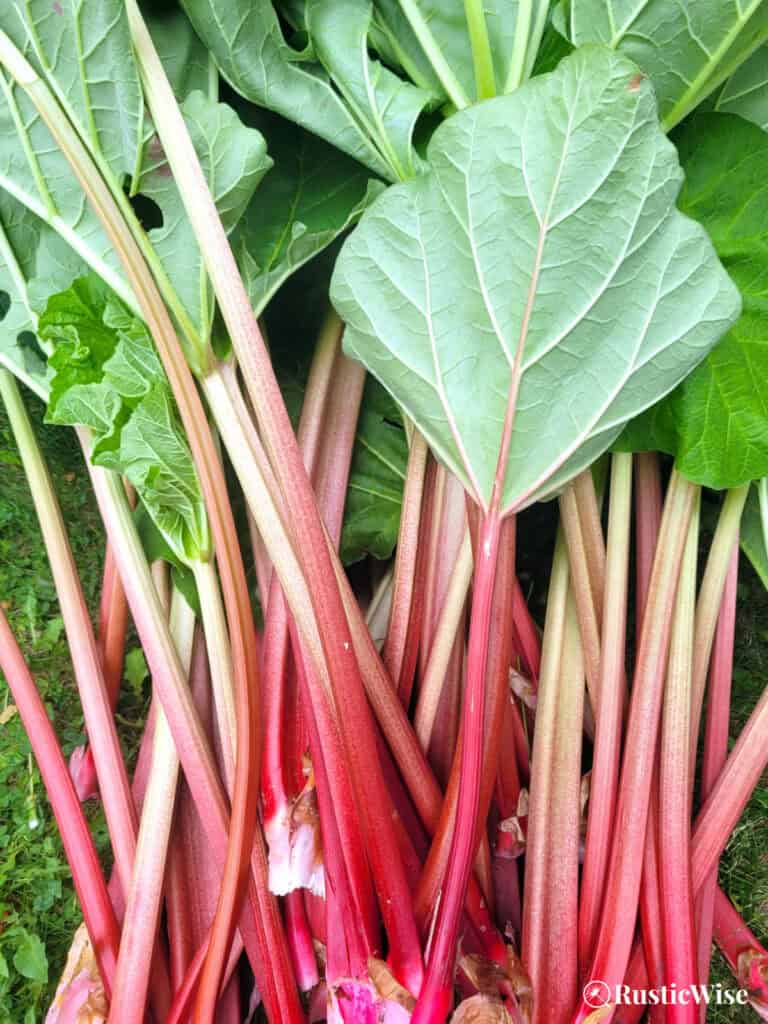
Credit: RusticWise
When is the best time to harvest rhubarb?
The best time to reap rhubarb is in the brief window of spring to early summer, usually from April to June, when the stalks are thick and firm. At this point, the petioles are tender and tasty!
It’s important to wait until the petioles are at least 10 to 15 inches long (25 to 38 centimeters) before picking. Harvest only sparingly in the summer to keep the plant healthy.
Avoid harvesting in the first year to allow the plant to establish strong roots. Always leave some stems on the plant to keep it healthy for future growth. Harvest by gently twisting and pulling the stalks near the base.
5 Common mistakes to avoid when picking rhubarb
Knowing when this large plant is ready to harvest, how to pick the petioles properly, and how much to take are vital. Check out this roundup of missteps to avoid, plus how to harvest rhubarb stalks.
1. Harvesting Too Soon
A seasoned gardener will tell you, do NOT harvest any rhubarb during its first year. Avoid removing any leaves or stems during the first growing season to allow the plant to establish itself. The leaves produce essential sugars used to nurture the roots and support healthy crown development.³
If you have a crop of brand new rhubarb plants in your vegetable garden, avoid harvesting any stalks during the summer as this may stunt growth for the following year. Only gather petioles of new plants in the second year if the entire plant appears healthy (otherwise, wait a year or two).
And if you’re growing from seed, it may be best to wait until the third year to harvest rhubarb.
You’ll know your plant is ripe for the picking when stalks develop a pinkish-red hue with a touch of green (depending on the variety). The leafstalks will appear shiny and firm, a sure sign of freshness.⁵
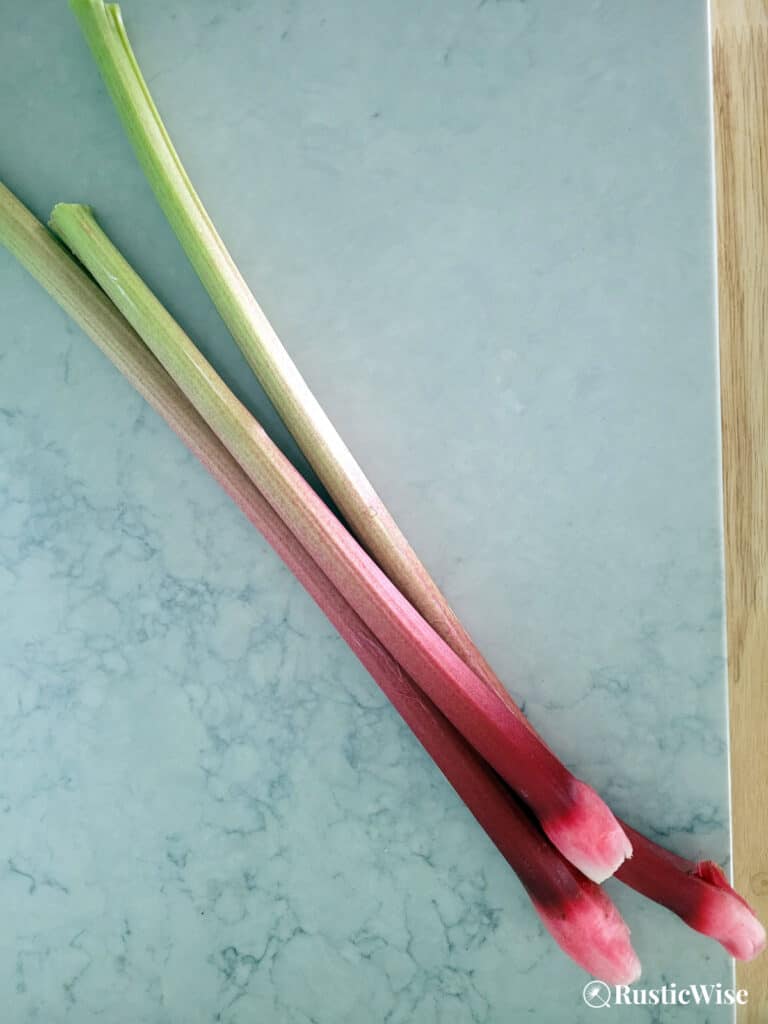
Credit: RusticWise
2. Harvesting Too Late
The harvesting window is brief, and if you forget to harvest during the spring (or early summer), you’ll soon find the stalks limp, or with split end and blemishes.
Harvesting stems past their prime will result in bitter tasting food (and nobody wants that!). Plus, overripe stalks can become tough and fibrous, making them unpleasant to eat. The plant also uses more energy to maintain old stalks, which can weaken it for the next growing season.
Regular harvesting helps keep the rhubarb healthy and productive year after year.
3. Harvesting Too Much
Depleting the plant of all petioles (leafstalks) will deprive the roots of the nutrients required to survive the winter. During harvest season, it’s best to gather leafstalks from the plant for a period of 4 to 6 weeks.³
Tip: Aim to harvest roughly two-thirds of the stems on your first harvest. This allows for enough petioles to remain for healthy growth the following year.
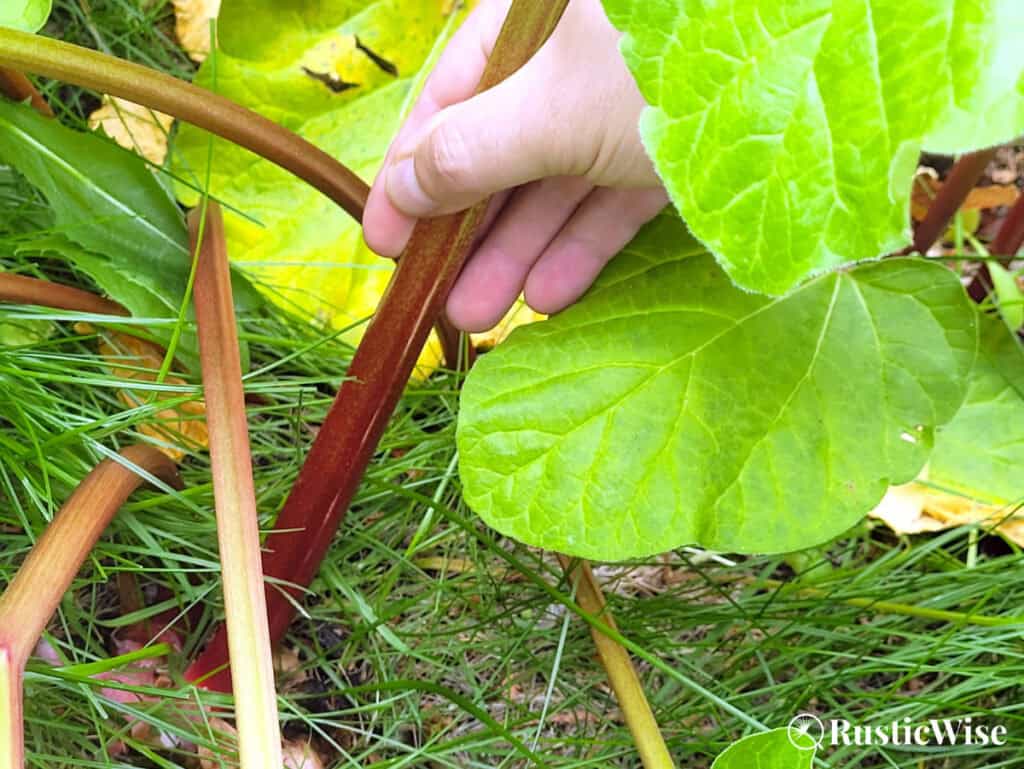
Credit; RusticWise
4. Cutting the Stalks (Instead of Twisting)
No need for pruning shears or a sharp knife when picking the stalks.
The best way to harvest rhubarb is by using your hands rather than shears. Grab hold of a stalk at the base of the plant and twist and pull upwards using a quick rotation of the wrist (a ¾-clockwise turn, or counterclockwise, whichever works for you). It should come off with a satisfying crunch! This lets you get nice and close to the crown of the plant.
This signals to the plant that it’s time to send some new stalks. Cutting with shears doesn’t have the same effect.
It’s important to harvest a bit each season to direct more sunlight to the remaining stalks. (As you’re aware, the leaves on this perennial can get large and bushy which blocks out light.)
The plant can now redirect its energy to producing new shoots and build up energy for next year.
Tip: Once you’ve gathered some tasty stalks, remove all toxic leaves, and discard.
5. Not Removing Flowering Stalks
In midsummer, warm, long days can cause rhubarb plants to produce flowering stalks. It’s best to remove these blooming stems as soon as you see them. If left to grow, they’ll pull nutrients away from the stalks and roots, which can weaken the plant.³
Unless you’re planning on saving rhubarb seed, there’s really no use for the plant to produce seedheads.
How to store rhubarb in the fridge
Now that you’ve removed the leaves and stalks from the plant, how exactly do your store them? Leave the stems unwashed and uncut and store them in an airtight plastic bag or container in the crisper drawer. They should be good for 1 to 2 weeks here.
Washing and cutting before storing will shorten shelf life. Smaller pieces tend to dry out quickly, while water content can cause the stalks to spoil.²
Tip: If you’re cooking or preparing whole rhubarb stalks stored in the fridge, place them in a bowl of cold water for about 1 hour prior to cooking. This will freshen up the stalks.⁵
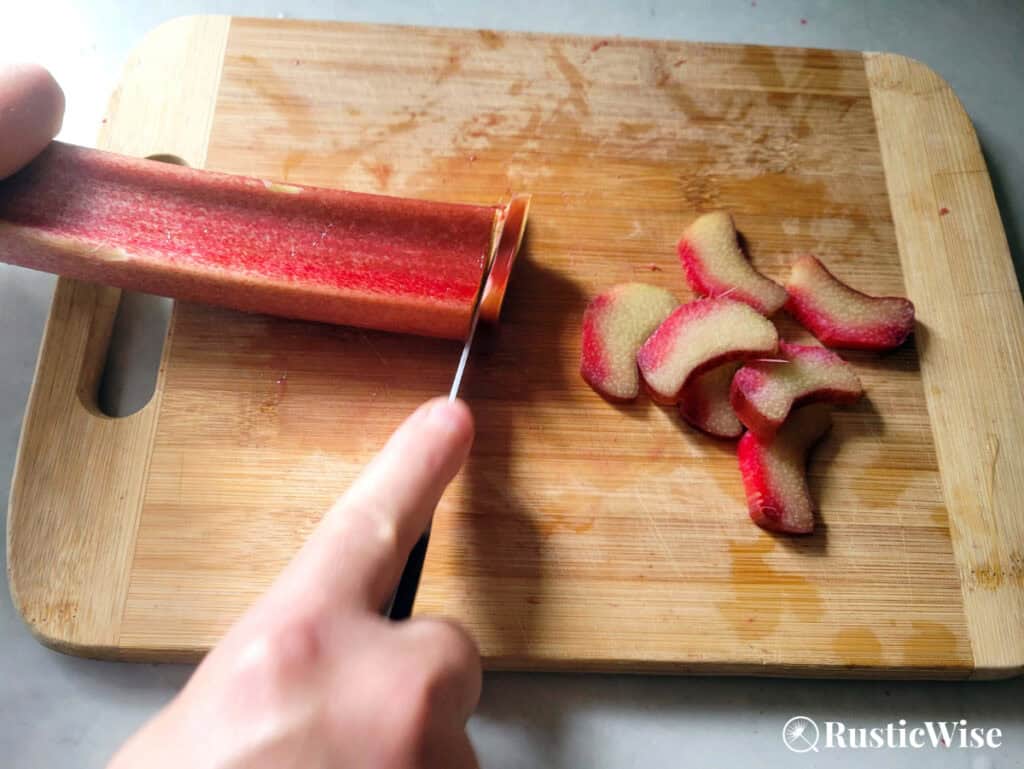
Credit: RusticWise
Freezing rhubarb
If you need long-term storage, you can prep and freeze them for up to 6 months.
- Remove all leaves. Now, you’re left with colorful stalks that look like celery.
- Wash and pat dry.
- Remove any fibrous strings, or blemishes.
- Dice into small pieces, roughly 1 or 2 inches. If rhubarb stalks are very wide, cut in half lengthwise.
- Divide into portioned servings in a ziploc bag or other freezer-safe container.
- Don’t forget to label!
Optional: You may prefer to stew or cook the plant before freezing. Allow the portions to cool before placing in the freezer. For best results, do not sweeten prior to freezing. Sugar draws out moisture and may alter the texture.⁵
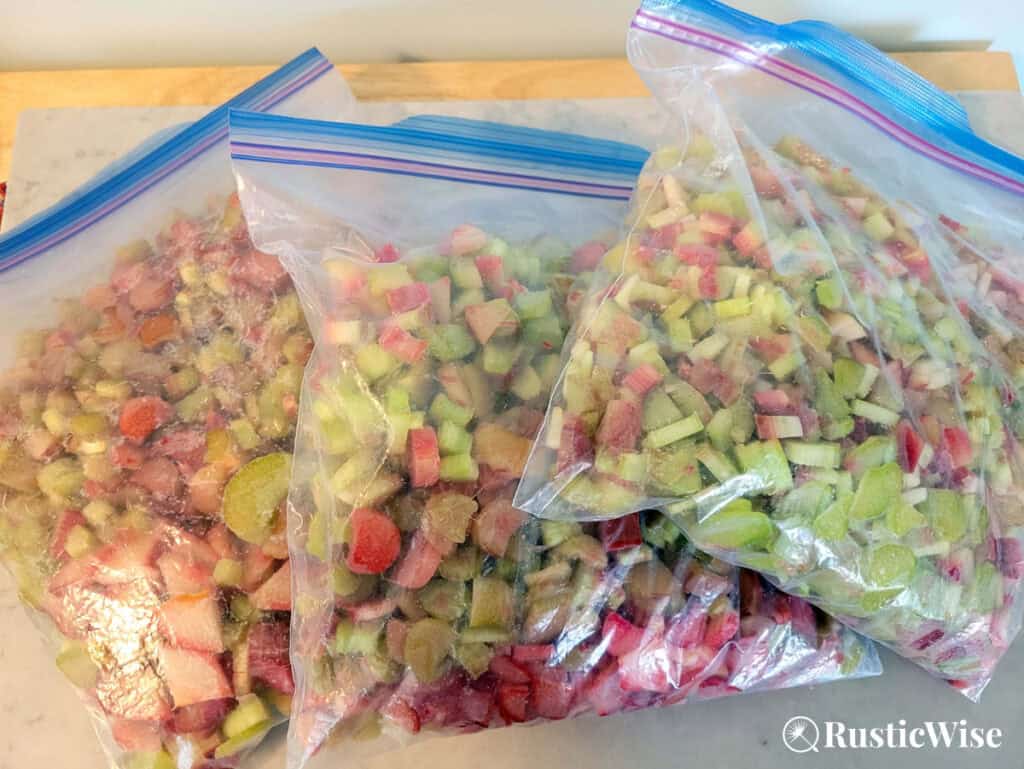
Credit: RusticWise
Things to make with rhubarb
This perennial crop is packed with calcium and potassium, plus vitamins C and K.³
Rhubarb is a common garden crop characterized by its mouth-puckering sour-sweet leafstalks often used in pie fillings, crumbles, jams, and other sweet confections. Its acidic flavor profile pairs well with strawberry, mint, and raspberry. Use it as a flavorful base for syrups, viniagrettes, and even cocktails.
Since it shares a flavor similar to cranberries, you can use rhubarb as a substitute. Start with half the amount of fruit required in the recipe, and add more sweetener as needed.
Fun fact: Technically, rhubarb is a perennial vegetable, but most people use it as a fruit.
Related questions
Is it safe to compost rhubarb leaves?
Yes, it’s safe to compost rhubarb leaves because the toxins break down quickly during the breakdown process. So while the leaves are toxic to consume, they are fine to compost.
Ensure all ingredients are fully broken down before adding to edible crops. Proper composting ensures harmful substances are minimized.⁶
Can you eat rhubarb stems raw?
While technically rhubarb stems can be eaten raw in small quantities, they are quite tart and fibrous. Many people prefer cooking them to soften the texture and mellow the flavor. If you try them raw, consider adding a little sugar or pairing with sweeter fruits.
👉 If you like this post, see our complete Indoor Growing Collection.
Would you like more timeless tips via email?
Fun tips to help you live an independent, self-sustaining lifestyle. Opt-out at any time.
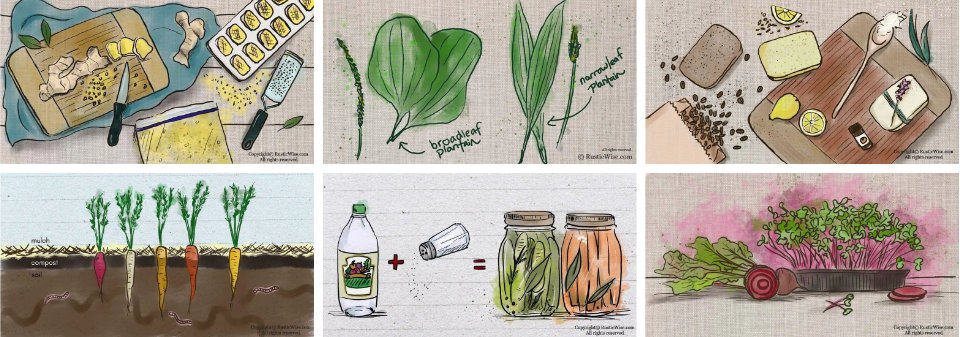
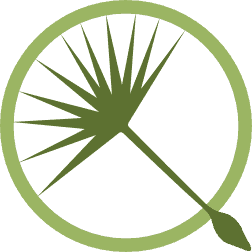
References
- Britannica, Rhubarb, https://www.britannica.com/plant/rhubarb. Accessed July 2025.
- Casey, C. (2023). “The Timeless, Tasty, Sometimes Medicinal Rhubarb,” Fairfax County Master Gardeners. . Accessed July 2025.
- Moore-Gough, C. (June 2019). “Growing Rhubarb in Montana,” Montana State University Extension, https://www.montana.edu/extension/powderriver/documents/fruits/MT200006AG.pdf. Accessed July 2025.
- Mount Sinai, Rhubarb leaves poisoning, https://www.mountsinai.org/health-library/poison/rhubarb-leaves-poisoning. Accessed July 2025.
- University of Wyoming, Rhubarb Ready!, https://uwyoextension.org/uwnutrition/newsletters/rhubarb-ready/. Accessed July 2025.
- Chicago Botanic Garden, Composting rhubarb leaves, https://www.chicagobotanic.org/plantinfo/composting_rhubarb_leaves.
Accessed July 2025.

Author: Josh Tesolin
Josh is co-founder of RusticWise. When he’s not tinkering in the garden, or fixing something around the house, you can find him working on a vast array of random side projects.

